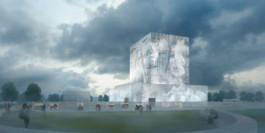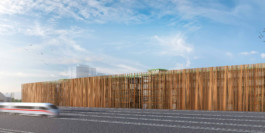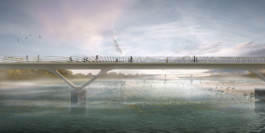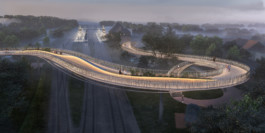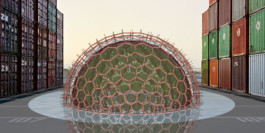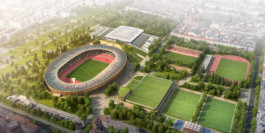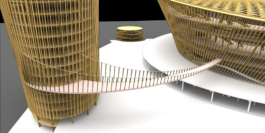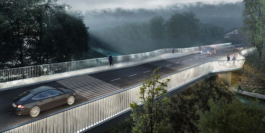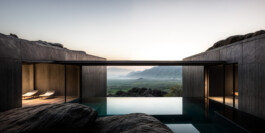What we do
STERLING PRESSER delivers innovative, elegant and sustainable projects. We design buildings, infrastructures, masterplans, interiors and objects with the common goal: to achieve sustainable projects. We design with the future in mind. Our team works on the questions of our time: can we change the way we currently live, work and circulate.
Architectural Design
We deliver full architectural design services. In today’s world, designing a building is about much more than the development of a program into space. That’s why we question deeply any briefs to consider how to achieve any sustainability and environmental improvement. The ways people live, work and circulate is a driver for change. That makes it our responsibility to ensure our designs are flexible enough to move with any future challenges. Our team is set up as a single point of contact in order to facilitate the project development and coordination throughout.
We work with flexibility with other design specialists, other practices, local partners and approval body. As the projects develop, we keep an involvement and a level of support and commitment up to construction. Together and in line with engineering and technical approach, we endeavour the full architectural and design review, so that the best concepts are adopted.
Infrastructure Design
A Bridge is defined as a structure built to span a physical obstacle such as a body of water, valley, road, or rail without blocking the way underneath. It is constructed to provide passage over the obstacle, which is usually something that is otherwise difficult or impossible to cross. There are many unique designs of bridges, each serving a particular purpose and applicable to different situations.
Sustainability & environmental strategies
We are dedicated to sustainability in every construction project. From the start, we consider environmental impacts to minimize future effects. We work with our design team to create eco-friendly plans and consult with local groups to ensure our projects are responsible.
Use of materials
Our specifications actively support the reuse of recycled materials and components, and we consistently select products made from recycled materials. Whenever possible, we favor refurbishing existing buildings over new construction. We design for the demountability of fabric and structure to facilitate reuse and recycling, and ensure the longevity of new buildings by focusing on quality, flexibility, adaptability, low energy use, simplicity, and robustness.
Circular economy
We prioritize the reuse of site-won materials and efficient cut and fill management to minimize waste and environmental impact. Additionally, we contribute to the client's sustainable procurement strategy, ensuring that our projects align with broader environmental goals and promote the reuse and recycling of materials throughout the construction process.
Carbon management
We aim to understand carbon intensities across asset lifecycles, including energy, water, waste, and transport, and perform optioneering exercises based on multi-criteria analyses. Additionally, we promote sustainable transportation by encouraging the use of public transport and designing spaces for electric vehicles (EVs) and car-sharing programs, engaging with stakeholders to support these initiatives.
Improved quality of life
We view the earth as a closed system within which there should be no waste. The UNFCCC’s Kyoto Protocol and Paris Agreement leave no room for doubt: it is vital that CO2 emissions are substantially reduced, if we are to ensure the survival of humankind and animal life and the planet as we know it. New construction represents one of our best and greatest opportunities for systemic restoration: if built regeneratively, our cities can act as carbon sinks and create equitable development opportunities. New construction needs to be based on a circular, long-term approach from an early stage of the design process.
Computational design & advanced technologies
Innovation comes from an open minded and pragmatic approach to design. It is often equated with an invention, a new idea. It is also about the path and the process: behind every good innovation, there is always an extraordinary pattern of thought that leads to the formulation of the idea and its delivery. A novel concept must also stand the test of time and benefit for the architectural project and to the society as an extent.
Parametric design
Parametric processes, particularly of geometry are a massive part of the approach. Geometry is a huge topic on design development. Programming and numerical wizardry is a requisite these days of all our staff on projects adding value by having mathematical and scripting expertise. We will add value to the architectural workflow process by helping to work with them to define surfaces, lines and points.
BIM
We involve all disciplines in early-stage design through integrated computational processes and a unified BIM model. This approach enhances proactive coordination and breaks down traditional barriers between architecture, structural engineering, civil engineering, and ground engineering. Using advanced software for multi-objective optimization and real-time simulation, we deliver precise and innovative solutions for better client and end-user outcomes.
AI / VR
We extensively use AI to accelerate design analysis, floor schematics, and project aesthetics with tools like MidJourney, ensuring ethical use by avoiding copyrighted images. VR advancements, via software like Twinmotion, provide immersive project views, allowing real-time render modifications for enhanced client presentations and design evaluation. The metaverse further expands opportunities for architectural expression and global showcases.
Modern methods of construction
The “Modern Method of Construction” approach to building design follows a ‘construction first’ mentality. Its fundamental aims are to increase efficiency, reduce wastage and reduce time on site. For too long the construction industry has maintained old-fashioned methods without learning from other industries such as production engineering, automation and aerospace technologies.
Rapid prototyping
Facilitated by our innovative design technology, the team employs a ‘rapid prototyping’ approach at the earliest stages of the design. Rapidly modelling design options in order to simulate various engineering and design analyses and compare different options.
